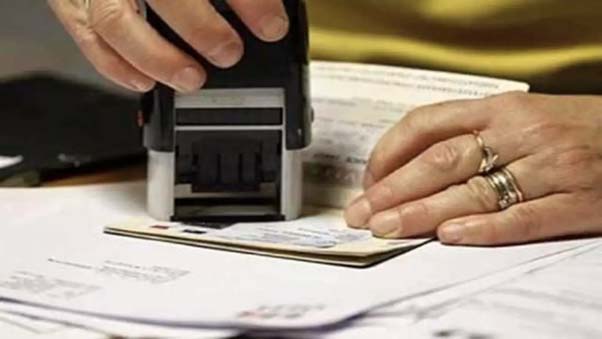If you’re making plans to go to Canada for tourism, enterprise, a look at, or work, you will need a legitimate visa to go into the USA. A visa is a document that permits you to live in Canada for a specific period of time. Depending on your nationality, you could need to apply for a visa online or at a visa workplace before you travel to Canada. But getting a visa is not the final step. It might help if you additionally got your visa stamped on your passport by using the Canadian authorities. This is known as visa stamping, an important part of your immigration procedure. Visa stamping confirms that your visa application has been authorized and that you may enter Canada.
So, how long does it take to get your visa stamped? And what factors can affect the processing time? This article will answer these questions and give tips on speeding up your visa stamping process.
How much time does it take for the Canadian visa to get stamped?
This process can take weeks or months. Factors such as visa type, location, and time of year can affect the processing time.
According to the official website of Immigration, Refugees, and Citizenship Canada (IRCC), the average processing time for visitor visas (outside Canada) was 17 days as of January 2022. However, this is only an estimate based on past applications and does not guarantee how long it will take for your specific case.
You can check the current processing times for different visa types and countries on the IRCC website. You can also use the online tool to check the status of your application by entering your unique client identifier (UCI) and application number.
However, remember that these processing times do not include the time you need to provide biometrics (fingerprints and photos) or the time it takes for your passport and documents to be delivered by mail or courier.
What factors can affect the processing time for Canadian visa stamping?
Several factors can influence how long it takes for your visa to be stamped. Some of them are:
Visa type: Different visa types have different processing times. For example, visitor visas may take less time than study or work permits, which require more documents and verification.
Location: The processing time may vary depending on where you apply for your visa and submit your passport for stamping. Some visa offices may have more workload or backlog than others, which can cause delays.
Time of year: The processing time may also depend on the season or holiday period. For example, there may be more applications and longer waiting times during peak travel seasons, such as summer or winter holidays.
Documents: The completeness and accuracy of your documents can also affect the processing time. If you submit complete or correct documents, your application may be returned or rejected, ensuring your visa stamping process is completed on time.
Biometrics: You may need to provide biometrics (fingerprints and photos) as part of your visa application. This can add extra time to your processing time, especially if you need to book an appointment at a biometric collection center.
Medical exam: You may need to undergo a medical exam if you plan to stay in Canada for more than six months or come from a country with a high risk of certain diseases. This can also add extra time to your processing time, as you need to wait for your exam results.
Police certificate: You may need to provide a police certificate from your country of residence or any country where you have lived for more than six months in the past ten years. This can also add extra time to your processing time, as you must obtain the certificate from the relevant authorities.
How can you speed up your Canadian visa stamping process?
While you cannot control all the factors that affect the processing time for Canada visa stamping, there are some things you can do to speed up your process and avoid unnecessary delays. Here are some tips:
Apply online: Applying online is faster and easier than applying on paper. You can submit your application and pay your fees online, upload your documents electronically, and track your application status online.
Check the requirements: Check the requirements for your visa type and country of residence before applying. Follow the instructions carefully and provide all the required documents in the correct format and size.
Check the validity: Make sure your passport is valid for at least six months beyond your intended stay in Canada. Also, ensure you have enough blank pages in your passport for the visa stamp and any other stamps you may need.
Be patient. Only contact the visa office or the IRCC if necessary. Frequent inquiries will not speed up your process and may cause confusion or errors. Wait for the visa office or the IRCC to contact you if they need more information or if your visa is ready for stamping.
What are the recent changes to Canada’s visa stamping processing time?
Due to the COVID-19 pandemic, there have been some changes to Canada’s visa stamping processing time and procedures. Some of these changes are:
Reduced services: Some visa offices and biometrics collection centers may have reduced or suspended their services due to local health and safety measures. This may affect the availability of appointments and the processing of applications.
Priority processing: Canada is prioritizing the processing of certain applications, such as those related to family reunification, economic recovery, or essential travel. This may affect the processing time for other applications, such as visitor visas.
Online applications: Canada encourages applicants to apply online rather than on paper to reduce physical contact and delays. You can also submit your biometrics online if you have given them before as part of a previous application.
Canada visa stamping processing time can vary depending on various factors, such as visa type, location, and time of year. To check the current processing times and the status of your application, you can use the IRCC website or the online tool.
We hope this article has helped you understand more about Canada visa stamping processing time and how to prepare for it.

















